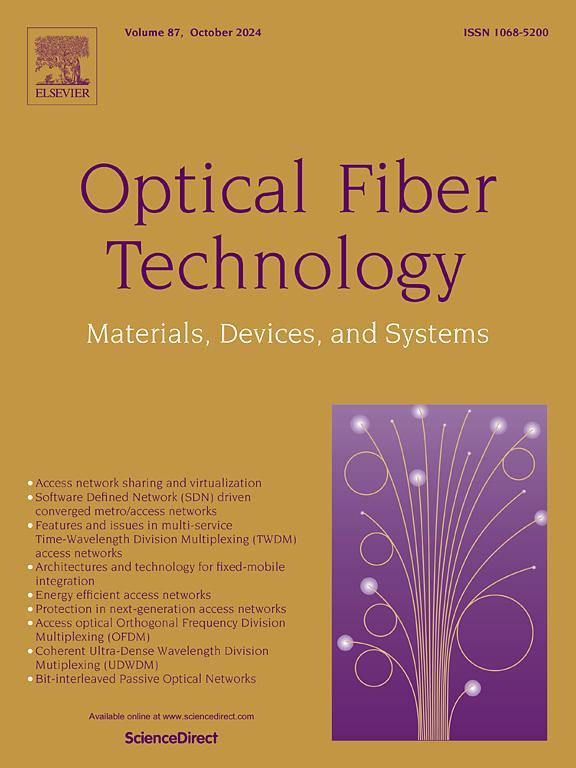Planning of multilevel edge-disjoint trees in filterless optical networks
IF 2.7
3区 计算机科学
Q2 ENGINEERING, ELECTRICAL & ELECTRONIC
引用次数: 0
Abstract
Filterless optical networks (FONs) are attractive due to their cost and energy efficiency; however, multicast provisioning under edge-disjointness can intensify spectrum contention. This work investigates the joint design of multilevel edge-disjoint multicast trees and spectrum assignment that minimizes the maximum number of frequency slots, subject to a physical topology and a traffic-demand matrix, while adhering to a maximum reach constraint. We develop single-level and multilevel algorithms, including heuristics seeded by minimum-spanning and shortest-path trees, as well as genetic-algorithm (GA) variants that jointly optimize tree construction and demand-to-tree assignment. Simulations show that the GA consistently reduces peak spectrum usage relative to heuristics. At the same time, multilevel designs further lower the peak compared with single-level counterparts. We also observe that a simple demand-allocation rule — assigning to the minimum-edge tree first — performs robustly across networks. The results indicate that GA-guided, multilevel designs offer a practical and scalable approach to multicast provisioning in FONs.
无滤波光网络中多层边不相交树的规划
无滤波器光网络(FONs)因其成本和能源效率而具有吸引力;然而,在边缘不连通的情况下,组播会加剧频谱争用。本研究研究了多层边不相交多播树和频谱分配的联合设计,在遵守最大到达约束的同时,服从物理拓扑和流量需求矩阵,最小化频率槽的最大数量。我们开发了单级和多级算法,包括由最小生成树和最短路径树播种的启发式算法,以及共同优化树构建和需求到树分配的遗传算法(GA)变体。仿真结果表明,与启发式算法相比,遗传算法持续地减少了峰值频谱的使用。同时,与单电平设计相比,多电平设计进一步降低了峰值。我们还观察到,一个简单的需求分配规则-首先分配给最小边树-在网络中表现良好。结果表明,ga引导的多层设计为fon中的多播提供了一种实用且可扩展的方法。
本文章由计算机程序翻译,如有差异,请以英文原文为准。
求助全文
约1分钟内获得全文
求助全文
来源期刊

Optical Fiber Technology
工程技术-电信学
CiteScore
4.80
自引率
11.10%
发文量
327
审稿时长
63 days
期刊介绍:
Innovations in optical fiber technology are revolutionizing world communications. Newly developed fiber amplifiers allow for direct transmission of high-speed signals over transcontinental distances without the need for electronic regeneration. Optical fibers find new applications in data processing. The impact of fiber materials, devices, and systems on communications in the coming decades will create an abundance of primary literature and the need for up-to-date reviews.
Optical Fiber Technology: Materials, Devices, and Systems is a new cutting-edge journal designed to fill a need in this rapidly evolving field for speedy publication of regular length papers. Both theoretical and experimental papers on fiber materials, devices, and system performance evaluation and measurements are eligible, with emphasis on practical applications.
 求助内容:
求助内容: 应助结果提醒方式:
应助结果提醒方式:


